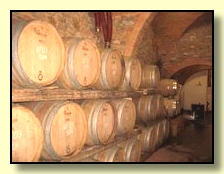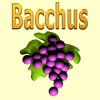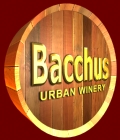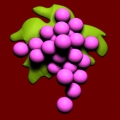The basics of storing and protecting your wines.
Storing wine doesn't have to be complicated. Even fine wines can be very tolerant of less than ideal conditions, but to get the highest levels of enjoyment out of collecting and drinking wine - it helps to look after it correctly. Let's start with the basics:
RACKS & POSITION

- Store newly bottled wine upright for the first 3-5 days. Thereafter, your bottles should be left lying horizontally so that the cork remains moist.
- Avoid racks with sharp edges as they tend to tear wine labels. You can use wooden shelving, chimney pipe, wooden wine crates or bins to store your wine.
- Purpose-build wine racks usually do not allow for half-bottles or larger bottles (magnums, etc.) - allow room for these.
- Allow some means of attaching cards or labels to help you sort and easily identify your wine and where it is.
- NOTE: Do not store your wine on heated floors or directly on a cement floor (put a thick piece of wood down first).
MOVEMENT
- It is not necessary to turn your wine. Red wines sometimes "dust" (residue can be seen on the inside of the bottle). It is normal for some wines (particularly high-end and heavy reds) to shed some tannin during the ageing process.
- Movement and vibrations can cause sediment to stay suspended in the wine, resulting in either a haze or even unattractive looking "floaty bits".
- Simply decant the wine before serving. This will not only leave sediment behind and allow the wine to "breathe", but it can be an enjoyable part of the serving process as well.
LIGHT
- Keep your storage area dark when not in use.
- Light produces chemical reactions in wine which can cause it to deteriorate. Ultraviolet and fluorescent lights have the greatest negative effects.
- The wines most vulnerable to light are whites and champagnes.
- Tinted bottles help to reduce the effects of light.
HUMIDITY
- Dampish is best (a relative humidity of 50-70% is a good range). In the absense of complicated humidity control systems, a damp sponge left on a saucer will provide essential humidity.
- If the air is too dry, it may cause the corks to dry out and lose their elasticity and air may get into the bottle.
- Too much humidity may cause mould to grow on the corks and deteriorate both them and the wine they are protecting.
CORKS
- Synthetic corks are very good for longer term storage (1-3 years) as they eliminate problems such as leakage and oxidation. Many top wineries now use synthetic corks.
TEMPERATURE
- The area should be reasonably cool. Ideally, it should be 7-15°C (converter) or about as cool as you would want to drink your white wines.
- Keep the temperature as consistent as possible - a wine will suffer more from daily extreme changes of temperature than from being stored at a less than ideal temperature. A kitchen - with dramatic temperature changes - is usually the worst place to store wine.
- Generally speaking (and over a period of years), the warmer the storage area the faster the wine will develop - or possibly decay.
AIR CIRCULATION
- Should be draft-free, but not airless.
SULPHITES
- Sulphites help to protect wine from spoilage and oxidation.
- If aging longer than 6 months, add about 1/4 tsp of extra sulphites and it will dissipate with age.
RECORDS
- A cellar-book is essential - it adds to the fun of collecting wine and greatly increases your knowledge and ability to choose appropriate wines for specific occasions or to accompany food.
- Keep a record of each wine: when it was made or bought, what it tasted like when you last had it, what foods it would go well with, a score or grade (1-10?), and any other comments you might have.
- You can also soak off wine labels and stick them in a small scrapbook with the same comments and information.
STORING LEFTOVER WINE
- There are several ways to help save the integrity of an unfinished bottle of wine. Prolonged contact with air will ruin the wine's flavor, so you can start by tightly re-corking the bottle and refrigerating the wine. If possible, remove as much air as possible (you can buy a special plastic cork with a suction device). You can also use nitrogen (you're sure to have that hanging around the house) or buy a refrigerated wine dispenser. All choices still only give you from 1 to 3 days.
 Back to Top
Back to Top




